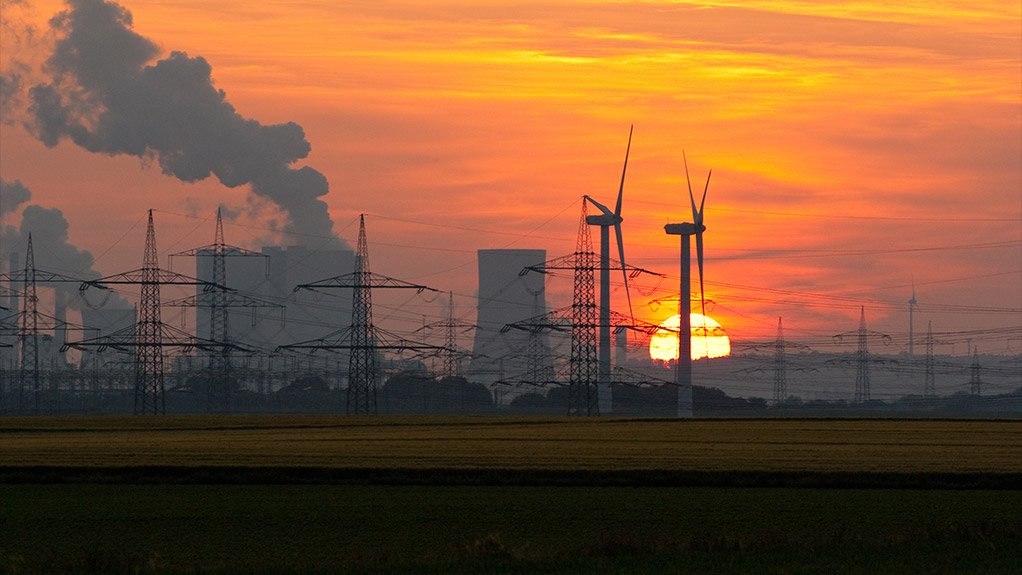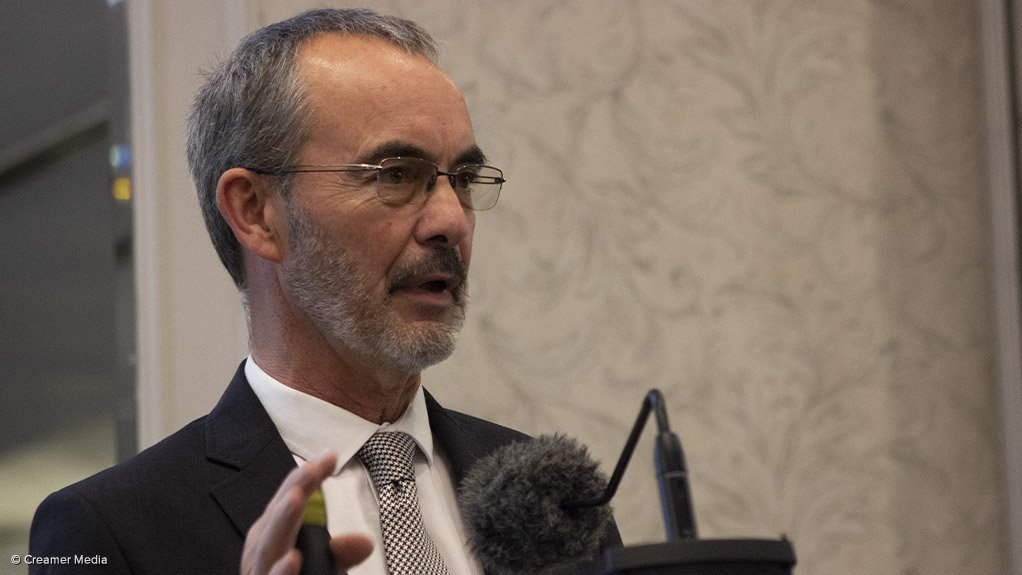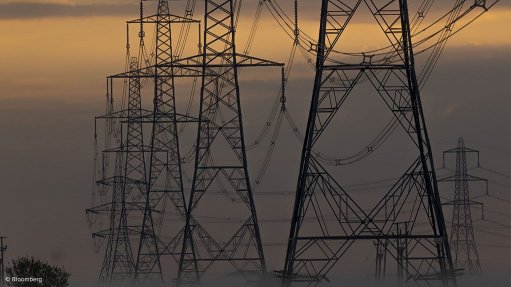Changes in the energy supply sector need coordinated leadership



POWER SHIFT Who’s going to lead the charge?
HENK LANGENHOVEN There are potential solutions, but we need to coordinate all the stakeholders
The complex transition from a coal-based economy to a renewable-energy-based economy requires focused and coordinated leadership, although it will take decades to happen, says Minerals Council South Africa chief economist Henk Langenhoven.
There is increasing pressure on electricity providers globally to move away from coal-fired power, owing to its harmful emissions. This creates uncertainty for coal miners which are not the culprits or large emitters of carbons.
Environmental activist organisation Greenpeace highlighted in a study, published in November last year, that South Africa’s Mpumalanga province had the dirtiest air in the world, owing to the high concentration of coal-fired power stations in the region.
In a follow-up study, Kriel, also in Mpumalanga, was identified last month as having the second-highest concentration of sulphur dioxide in the world, after the Norilsk smelter complex, in Russia.
The Department of Mineral Resources and Energy’s latest Integrated Resource Plan is the only guide to the possible longer-term dynamics of the transition, stating that several ageing coal-fired power plants are scheduled for decommissioning, with some already being decommissioned.
This lost capacity will have to be replaced within the next ten years, with renewed capacity possibly deriving from a combination of renewable energy, coal and various inputs from independent power producers if they can be licensed to add to the grid.
The cost of wind and solar energy has decreased by as much as 67% since 2010, owing to improved economies of scale internationally. This has resulted not only in new renewable- energy installations potentially becoming more economically viable per kilowatt hour than coal-fired energy but also ever- increasing investment in the renewable-energy sector.
These developments could threaten future coal-based job security, which has subsequently resulted in lobby groups placing political pressure on policy- makers to keep the coal industry alive – a situation that is further complicated by State-owned power utility Eskom’s financial woes.
Langenhoven is concerned about South Africa being in limbo, caused by the continuous debating over and a lack of certainty surrounding the future of electricity generation.
Decision-makers need to ensure that, whether coal-based or renewable-energy-based, the capacity is installed by 2030, he adds.
“Timeous decisions are of the essence. I’m very concerned that the Eskom financial crisis on the one hand, and the fierce resistance of the labour unions and local communities against renewable energy on the other, will consume us so much that nothing will happen,” he tells Mining Weekly.
Shifting Coalscape
The shape of the coal industry in South Africa has shifted over the past few years, with a number of small- to medium-sized mining companies taking over where majors once dominated, but with their operations dispersed over a wider geographical area.
This change is partly a result of international pressure from investors on majors to divest their coal assets because of coal-based energy’s negative contribution to carbon dioxide emissions. These divestments have created opportunities for investment by black-owned companies, encouraged by Eskom’s coal procurement policies.
The change is also a result of the largest coal seams having been mined, which has led to smaller deposits being mined in more diverse locations.
Coal miners will have to collectively maintain current coal production levels of about 120-million tons a year to supply Eskom in the short term, as the beleaguered utility frequently struggles with supply shortages.
However, the increasing viability of renewable energy has threatened the medium- to long-term sustainability of these new investments, and job security for the collieries and coal-related businesses, leading to pushback.
Quantifying the most recent to last version of the Integrated Resource Plan, the coal sector – defined as producers for Eskom consumption and Eskom workers – could potentially lose 70% of coal-based jobs in the next 32 years, Langenhoven said during a presentation to industry leaders in July.
“The social and political unrest caused by the uncertainty around the future sustainability of coal production is a very real threat,” he explains.
Lead the Way
A just transition from coal-based energy to renewable energy during which job losses are minimised, is possible, but requires the strategic repositioning and repurposing of assets, personnel and resources across various departments and industries in a coordinated manner, says Langenhoven.
However – and perhaps most crucially – the necessary leadership structures do not exist yet, he notes.
“Who must run this? Who will coordinate this? What institution will have the authority to do this?”
Langenhoven alleges that the National Planning Commission is not the sole answer because its plans and suggestions are high level and not rooted in the complex realities on the ground.
He further stresses that South Africa cannot look to developed economies for solutions to its energy transition because the country’s circumstances are completely different.
Langenhoven says there is opportunity for job creation and economic buoyancy in the repurposing of rehabilitated coal mine land for intensive agricultural purposes, irrigated by acid mine drainage (AMD) that has been treated to potable quality.
“Several water processing plants in Mpumalanga are providing excellent results. There is untapped potential there,” he notes.
He laments, however, that current legislation does not allow for treated AMD to be sold, which prevents this strategy from being implementable.
“Every stakeholder has a different perspective and we need someone to coordinate them all – from divergence and conflict to convergence and collabo- ration. We need leadership,” Langenhoven says.
He concludes that Minerals Council South Africa can only continue to facilitate dialogue between the myriad affected parties in the hope of finding a multibeneficial solution.
Comments
Press Office
Announcements
What's On
Subscribe to improve your user experience...
Option 1 (equivalent of R125 a month):
Receive a weekly copy of Creamer Media's Engineering News & Mining Weekly magazine
(print copy for those in South Africa and e-magazine for those outside of South Africa)
Receive daily email newsletters
Access to full search results
Access archive of magazine back copies
Access to Projects in Progress
Access to ONE Research Report of your choice in PDF format
Option 2 (equivalent of R375 a month):
All benefits from Option 1
PLUS
Access to Creamer Media's Research Channel Africa for ALL Research Reports, in PDF format, on various industrial and mining sectors
including Electricity; Water; Energy Transition; Hydrogen; Roads, Rail and Ports; Coal; Gold; Platinum; Battery Metals; etc.
Already a subscriber?
Forgotten your password?
Receive weekly copy of Creamer Media's Engineering News & Mining Weekly magazine (print copy for those in South Africa and e-magazine for those outside of South Africa)
➕
Recieve daily email newsletters
➕
Access to full search results
➕
Access archive of magazine back copies
➕
Access to Projects in Progress
➕
Access to ONE Research Report of your choice in PDF format
RESEARCH CHANNEL AFRICA
R4500 (equivalent of R375 a month)
SUBSCRIBEAll benefits from Option 1
➕
Access to Creamer Media's Research Channel Africa for ALL Research Reports on various industrial and mining sectors, in PDF format, including on:
Electricity
➕
Water
➕
Energy Transition
➕
Hydrogen
➕
Roads, Rail and Ports
➕
Coal
➕
Gold
➕
Platinum
➕
Battery Metals
➕
etc.
Receive all benefits from Option 1 or Option 2 delivered to numerous people at your company
➕
Multiple User names and Passwords for simultaneous log-ins
➕
Intranet integration access to all in your organisation



















